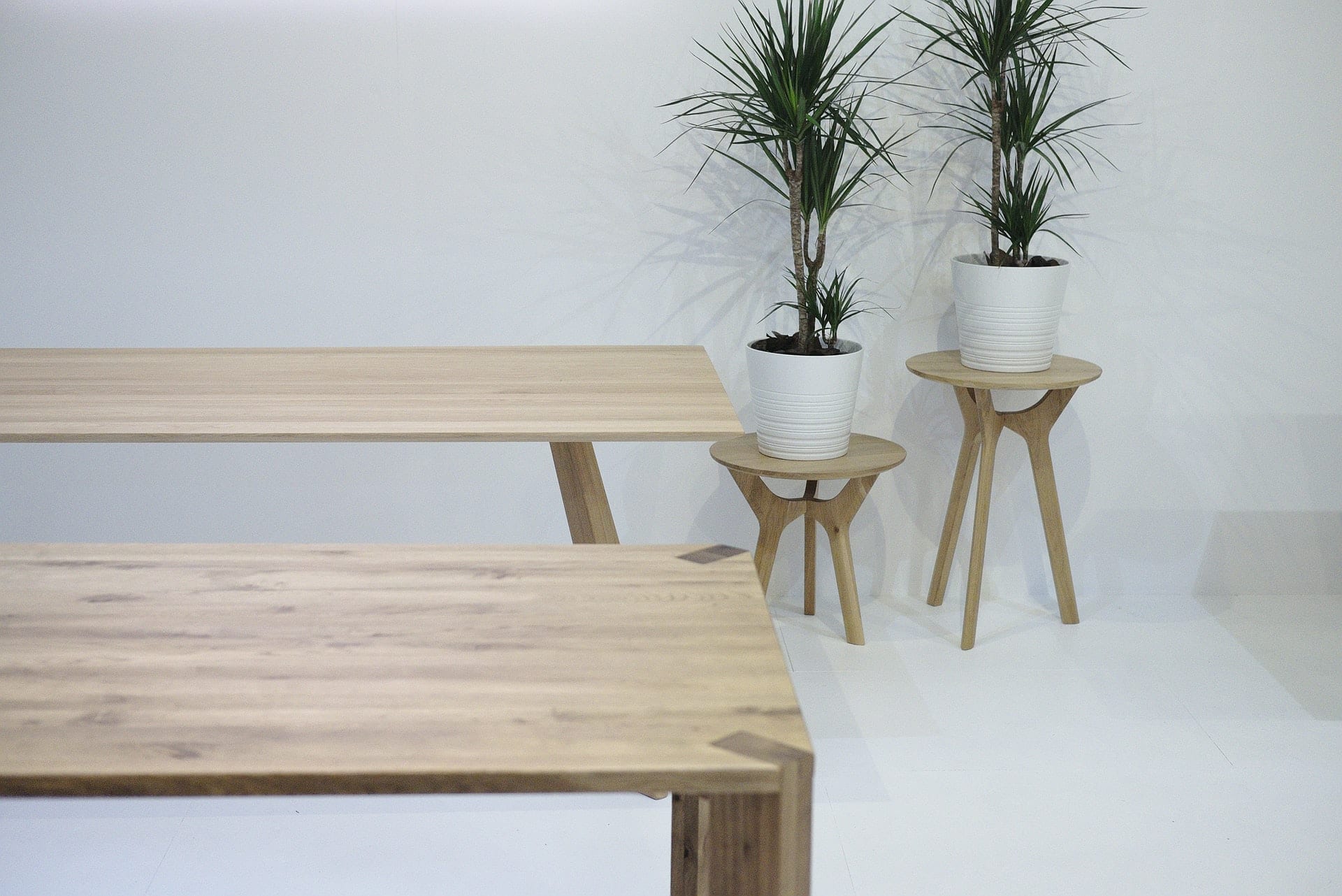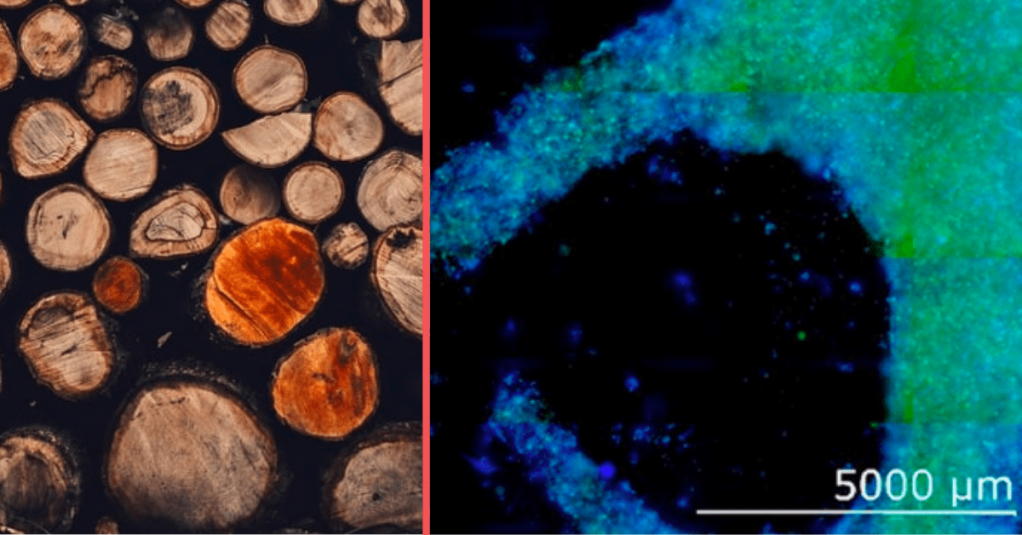For the last year or two, my family has been making a conscious effort to buy less plastic.
Certainly we try to avoid single-use plastics, but even for things that we’ll use again and again we try to find more durable, organic or metal alternatives.
But of course, there’s often an environmental cost to wooden items, too. It presents a conundrum.
Until now. Are you ready to have your mind blown? Lab. Grown. Furniture.
I warned you.

Image credit: Goashape via Unsplash
Wooden furniture is gorgeous, and plant fibers are supremely useful for other everyday items too, like clothing.
That’s why bamboo has become so popular–it grows quickly, with less environmental impact.
But now a PhD candidate at MIT, Ashley Beckwith, and her co-author, Luis Fernando Velásquez-García, have a brilliant plan to reduce waste and environmental impacts even further by growing wood in useful shapes (like 2 by 4’s) right in a lab.
MIT researchers including MechE PhD student Ashley Beckwith have proposed a method to grow plant-based materials, like wood and fiber, and have demonstrated the concept by growing a culture of wood-like cells from zinnia leaves, pictured https://t.co/xKtpy1zrbX pic.twitter.com/S8NGMR5rXt
— MIT MechE (@MITMechE) February 16, 2021
The MIT research team has been working with zinnia tissue, and they published their findings recently in the Journal of Cleaner Production.
As Fast Company reports, their goal is to:
…quickly produce in a lab what would take decades to grow in nature. From there, they could even coax wood tissue to grow into fully-formed shapes—like, say, a table—in order to mitigate the environmental harm of the logging and construction industries.
It’s not a completely new concept. Velásquez-García, a scientist in the university’s Microsystems Technology Lab, explains it in pretty simple terms.
“The plant cells are similar to stem cells. They have the potential to be many things.”
And it’s not just human stem cells. Other scientists have had similar success with lab grown meat products.
So isolating the ability to reduce plants down to a version of a stem cell is just the first step.
A team including MechE PhD candidate Ashley Beckwith grew wood-like plant tissue in the lab, which, if scaled up, could perhaps one day lead to the development of lab-grown wood, fiber, and other biomaterials https://t.co/ssoek4MB67
— MIT MechE (@MITMechE) February 17, 2021
Like the meat manufactures who want to grow only the most desirable parts of the animal, Beckwith and team have similar plans for their saplings.
“Trees grow in tall cylindrical poles, and we rarely use tall cylindrical poles in industrial applications.
So you end up shaving off a bunch of material that you spent 20 years growing and that ends up being a waste product.”
Rather than stopping with just growing trees, the team could grow planks, or, rather like 3D printing, they could even guide the development of the plant fiber into the exact shape for its intended purpose.
Of course not every manufacturer has a noble drive to safe the planet.
That’s why this new process is so exciting. It’s so easy, that when compared with the cost of logging, transportation, and everything that goes into cutting down trees to shape them into boards, lab grown trees could actually come out on top, at a lower cost!

Image credit: Lukasz Szmigiel via Unsplash
If the idea of lab-grown veggies freaks you out though, don’t worry. The folks in charge don’t see this being a process that is used to grow food. More like the kinds of plants used to make clothes and industrial materials. There are so many things that could be made from biodegradable plant fibers! Deforestation could become a thing of the past! At least due to human consumption.
How’s that for exciting? Did it blow your mind?
Tell us what you think in the comments!

